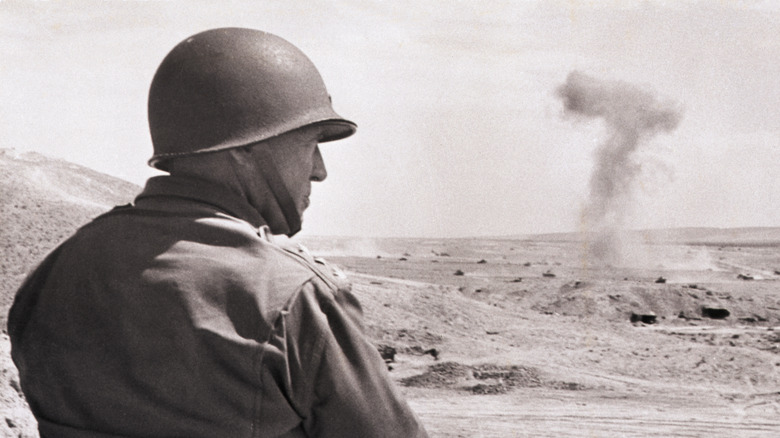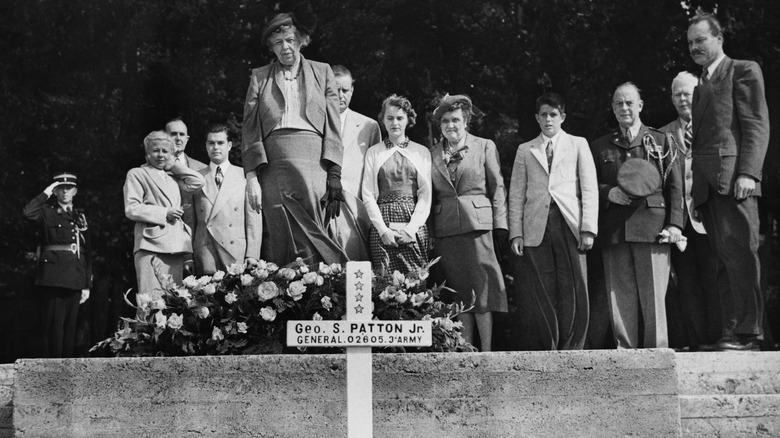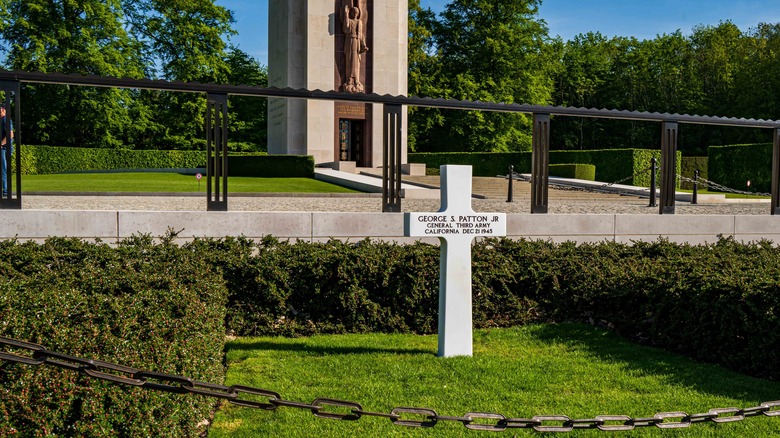What Happened To General George S. Patton Jr.'s Body?
As a boy, George S. Patton Jr. enjoyed the splendors of wealth but fought severe difficulties with the written word. As a young military man, he became a distinguished swordsman, a prized aide to General John J. Pershing, and an innovative commander of the World War I Tank Corps. As a general of World War II, he proved himself a ferocious and innovative fighter against the Nazis but an inept politician as military governor. And as a legend, he still looms over modern American military history, in everything from his manual on saber fencing to the iconic portrayal of him by George C. Scott in Franklin J. Schaffner's "Patton."
But Patton's star in life was fading toward the end. His tactless comments made while governing Bavaria alienated higher-ups in the army and the American government. They cost him his command. His consolation prize, writing the history of the European campaign, left him unsatisfied. On December 9, 1945, General Patton was caught in an automobile accident and was left with serious and painful injuries to his head and spine. Paralyzed and suffering, he lingered for 12 days before developing a fatal pulmonary embolism in his left lung. Patton was 60 when he died.
In the immediate aftermath of his death, Patton's body was removed from a Heidelberg hospital to a mountaintop villa outside the city to lie in state. His wife Beatrice, who had been his only visitor in his final days, was asked to choose between France and Luxembourg for a burial site. She chose Luxembourg; her husband had played a key role in liberating the country.
Patton's body was buried at Luxembourg American Cemetery
After lying in state outside Heidelberg for a day, George S. Patton's body was brought back to the city's Episcopalian Christ Church for a service attended by friends and partners from the Allied forces. From there, Patton and his gunmetal casket were loaded onto a train bound for Luxembourg. It arrived on a rainy Christmas Eve and was accompanied to the cemetery by locals, soldiers, and a horse and carriage.
A tent was erected over Patton's grave to keep the rain out as he was buried. Present for the funeral were his wife Beatrice, an honor guard, and a collection of religious figures, including several rabbis. Patton's harsh restrictions on Jewish prisoners freed from concentration camps were controversial within the Truman administration, and his recorded attitude toward the Jews can only be called antisemitic. But the rabbis, who wore their concentration camp uniforms to the funeral, per the National World War II Museum, felt that Patton's actions brought an earlier end to the war and their peoples' suffering than might have been, and so felt compelled to honor him. Patton's grave was dug by German prisoners of war.
The cemetery Patton was buried in was the Luxembourg American Cemetery, home to the bodies of some 5,070 soldiers. Many of them died fighting in World War II. The servicemen buried there have simple plots marked with white crosses, and initially, that's how Patton was buried.
Patton's grave was moved to protect the cemetery
While George S. Patton had a long and dignified journey to his grave in Luxembourg American Cemetery, his first grave there was a simple one: in the middle of a plot in the middle of a row, like any other soldier laid to rest there. This was standard military protocol, not to make distinctions by rank among the buried dead. But Patton was not any other soldier, by deed or by reputation. His grave soon attracted a slew of well-wishers. And they proved disastrous to the cemetery.
All the people coming to visit Patton's grave tore up the grounds of the cemetery. The damage got to be so bad that it was decided the general needed to move. He was exhumed and reburied in Plot P, Row 1, Grave 1, near the front. Visitors to Luxembourg American today will find his grave standing apart, cordoned off by a small chain and framed by hedges.
Patton might have been moved again as part of an overall rearrangement of the cemetery, but his wife Beatrice objected. "What is it you don't understand about 'rest in peace?'" she reportedly told those behind the plans (via the Arizona Central). Her objections were echoed by the Grand Duchess of Luxembourg. While the cemetery did undergo a redesign, Patton stayed where he was.


